From seed in 2010, these little beauties are putting up flower stalks this year!
Two different plants of Lupinus lepidus var. utahensis, the second a little more advanced... also a tighter plant in slightly leaner conditions.
Comments
Re: Lupinus lepidus var. utahensis
Well, they've only been through one winter for me so far, which doesn't say much yet!
Updated photos of Lupinus lepidus var. utahensis:
Re: Lupinus lepidus var. utahensis
And a few more to give an impression of the plant overall:

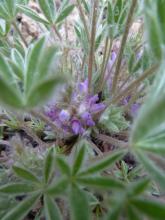
There was an incredible density of flowers on both plants through much of the summer - about 40 flowers per plant! The bigger plant rotted off towards the end of summer in this wettish season in my too-rich tufa bed, but was replaced by a multitude of seedlings, which I will move to higher, leaner parts of the new tufa beds in spring.
Re: Lupinus lepidus var. utahensis
What is a "too rich tufa bed?"
Re: Lupinus lepidus var. utahensis
Lori
Nice to see one of the other varieties of L. lepidus. I hope you have good luck moving the seedlings.
I grow Lupinus lepidus var. sellulus. It is a locale native and loves a dry sight.
Re: Lupinus lepidus var. utahensis
What is a "too rich tufa bed?"
I mean that the soil mix packed in between the tufa blocks contains more organic soil than it probably should (a long story)... also that area is not raised much above the level of the surrounding, and underneath it was an old rose bed - pure compost. All in all, from the combination of factors, I think that area holds too much moisture, hence the one rotted Lupinus lepidus var. utahensis.
John, your var. sellulus is rather showier, since it holds its flowers above the leaves - very nice plant. The flowers on var. utahensis are tucked into the crown, as the photos show... although I find the furriness of the inflorescence very appealing!
Re: Lupinus lepidus var. utahensis
Lori
Var. Utahensis grows in my neighborhood also, but I've never come across it. Thought I'd post some links to the two varieties.
http://www.calflora.org/cgi-bin/species_query.cgi?where-taxon=Lupinus+le...
http://www.calflora.org/cgi-bin/species_query.cgi?where-taxon=Lupinus+le...
Re: Lupinus lepidus var. utahensis
Quite a big difference between the varieties.
Both very admirable...
Re: Lupinus lepidus var. utahensis
I see from the CalPhotos site that there is a Lupinus ssp. sellulus var. lobbii (Donner Lake Lupine).
http://calphotos.berkeley.edu/cgi/img_query?enlarge=0000+0000+0708+0202
Lupinus seems to be a genus that has only been horticulturally "scratched at the surface"; so many wonderful garden-worthy species.
Re: Lupinus lepidus var. utahensis
Lori, I'm surprised you are growing Lupine on tufa. The lupines I have seen always prefer calcium poor silicaeous based (acid) soils. This is not to say the entire genus is like Lupinus articus, perennis, and polyphyllus. However, if species in a genus requires a certain soil condition then usually most (if not all) of the other members also require these same conditions.
James
Re: Lupinus lepidus var. utahensis
Really? The species that occur here grow in alkaline soil... that is not to say they require it, though. Lupinus polyphyllus grows easily here in alkaline soil too. There seems to be a few genera/species that actually require specific ranges of pH, but it seems an awful lot of plants are pretty oblivious to pH, in spite of the conditions in their native habitats or what is claimed in the gardening books.
Re: Lupinus lepidus var. utahensis
Lori, I rarely see Lupinus polyphyllus hybrids in garden where I liver or where I used to live in the Mohawk River Valley of NY. However, when I travelled to the White Mountains of New Hampshire this species was growing wild all over the roadsides. I always attributed their successful colonization to the granite parent material.
James
Re: Lupinus lepidus var. utahensis
Talking about Lupinus polyphyllus: It is blacklisted here in Norway and forbidden to plant but it is too late of course!
The first picture is from Iceland - intended as a warning :o
http://www.naturoppsyn.no/content/500040669/Lupiner-dekker-landet
the second is from Norway - a common sight along the roads here!
http://www.ranablad.no/nyheter/article5130464.ece
However, I don't think anyone will be mad at me if I grow L. lepidus ;)
Re: Lupinus lepidus var. utahensis
Trond
WOW!!! :o
The old adage holds true "One Man's Weed Is Another Man's FLower"
Re: Lupinus lepidus var. utahensis
Trond, is the lupin in Iceland (your first photo) actually L. nootkatensis? I was reading that it is an incredible pest there (though stunningly beautiful), and the white banners on the flowers in the photo look like L. nootkatensis rather than L. polyphyllus.
Lori, I rarely see Lupinus polyphyllus hybrids in garden where I liver or where I used to live in the Mohawk River Valley of NY. However, when I travelled to the White Mountains of New Hampshire this species was growing wild all over the roadsides. I always attributed their successful colonization to the granite parent material.
Surely it's not a bad thing that certain species that run rampant in their "ideal" conditions can also be grown satisfyingly-well in gardens in different conditions without risk of taking over the countryside? :)
The lupins that occur here are L. argenteus, lepidus (just sneaking across the border), nootkatensis, polyphyllus, pusillus (an annual) and sericeus, and they occur across the southern plains and western mountains, where the soils and groundwater are generally alkaline. (For example, the Rockies west of here are dominated by vast outcrops of extremely thick carbonate strata.)
Re: Lupinus lepidus var. utahensis
Lori, you are right. The text doesn't mention which species it is. However, both L. nootkatensis, perennis and polyphyllus are unwanted although they are rather common along the roads and railways.
L. perennis nootkatensis. Sorry - wrong name at the homepage!
From here:
Re: Lupinus lepidus var. utahensis
However, I don't think anyone will be mad at me if I grow L. lepidus ;)
I sent seeds to the NARGS and SRGC seedexes, so there's your chance!
Re: Lupinus lepidus var. utahensis
However, I don't think anyone will be mad at me if I grow L. lepidus ;)
I sent seeds to the NARGS and SRGC seedexes, so there's your chance!
:o ;D ;)
Re: Lupinus lepidus var. utahensis
Quote from: Peter George
I've tried them from seed 10 times, and although I've actually gotten a few flowers one year, they have only wintered over once. I've grown them in sand, in gravel and sand, and pretty much every other soil medium possible, yet they've simply never really liked it here in the northeast. The person who originally introduced me to rock gardening, Larry Rue, built a huge sand berm about 15 feet long, 3 feet wide and 5 feet tall, and had them self sowing on the south face.
I've been thinking a bit about more extreme constructions of rock gardens and what the results might be in unfavorable climates. There is a granite promontory on NE Cape Ann (Massachusetts) which is partially covered by up to 100 feet of granite quarry tailings. Every woody plant that grows there is a natural bonsai, except the most exposed areas which are essentially above the "tree line" due to salty winter gales. (Above the "tree line" at 100 ft elevation, 42.7N 70.6W) Unfortunately a hundred years is insufficient for the evolution of a new flora. (Possibly some day some Jobivaras might appear there by unknown means) ;)
Perhaps Peter can give us some more information, about the Larry Rue sand berm with the odd-sounding dimensaions. Where was it, and what else grew there?
Best regards,
Charles Swanson MA USA z6a +/-
Re: Lupinus lepidus var. utahensis
He had about 4 tons of sand delivered to his house, and laid out a berm that was 15 feet long, 5 feet wide and 5 feet high. He dug a trench that 'outlined' the berm, and started filling it with sand, rock and various inorganic 'stuff' that would fill up space without either deteriorating or absorbing water. It was a massive thing, utterly stupefying when finished, which took him probably 2 months working alone. I helped him a bit when he was at the 3 foot level, primarily helping him place bigger rocks to create ledges and crevices.
When it was done he planted hundreds of cacti, and far too many other plants than I could ever recall. I do remember that he ended up with 4 or 5 enormous Penstemon barrettiae, which flowered spectacularly the first spring after the berm was constructed. He must have sown about 100 Lupine seeds directly into the berm the first year, and most of the seeds germinated, creating a spectacular display the 2nd year when most of them bloomed. The 3rd year there were self-sown seedlings all around, but that was the year he decided to quit Massachusetts and resettle in Virginia, a profound mistake in my opinion.
The berm was primarily laid out east to west lengthwise, with an interesting shaded area at the west end where he grew Lewisia tweedyi, L. cotyledon, and several other choice things that like a bit more shade but need perfect drainage.
Overall it was a magnificent, if briefly present, berm, which for me at least, proved that you could grow western dryland plants here in New England if you took the time and effort to create a 'perfect' environment. It is a shame Larry disappeared, because he was a truly gifted rock gardener.
Re: Lupinus lepidus var. utahensis
Very interesting. What a shame he didn't remain there to garden after so much effort and great results (but I guess there is more to life than just gardening.)
You've hit the nail on the head there... being "gifted" as a rock gardener is all about providing the conditions that are needed, which requires much more effort in some areas than in others.
Re: Lupinus lepidus var. utahensis
This sounds really similar to Peter Korn's garden in Sweden, which is on an even more epic scale. When he talked to us on this he said he lived in one of the wettest parts of Sweden (60" annual rainfall), and didn't have consistant snow cover through winter (ie: fluctuating winter temperatures), and yet he grows an extraordinary range of plants from Lewisia tweedyi and hardy cacti, through to Meconopsis and Pulsatilla vernalis. Very much supports Lori's comments, although I would find it very hard to leave a garden like that!
Re: Lupinus lepidus var. utahensis
It's hard to believe, but that was only a small portion of his garden. He had a huge greenhouse where he sowed thousands of seeds a year, had over 4000 Hepatica hybrids that he grew from some very expensive Japanese stock, a front yard filled with hundreds of spring ephemerals (it was shaded by 4 huge Sugar Maples), species crocus and daffodils, plus two huge 'traditional' rock gardens filled with spectacular specimens that nobody else here in NE was growing. He was the person who introduced me to rock gardening, and he was a master at what he did with his garden.
Re: Lupinus lepidus var. utahensis
I've tried them from seed 10 times, and although I've actually gotten a few flowers one year, they have only wintered over once. I've grown them in sand, in gravel and sand, and pretty much every other soil medium possible, yet they've simply never really liked it here in the northeast. The person who originally introduced me to rock gardening, Larry Rue, built a huge sand berm about 15 feet long, 3 feet wide and 5 feet tall, and had them self sowing on the south face. Somehow I don't think my wife would be terribly happy if I replicated it here in my garden area, or as she puts it, in the territory she has permitted me to garden. But it IS a beautiful plant, one I'm sure I'll try again to please enough so it will survive 2 years at least.
An update on my results so far with Lupinus lepidus var. utahensis...
Over-wintering them doesn't seem to be the problem particularly here - it is more sustaining them through the summer after flowering that seems to be the trick...
From the original two plants that I planted out in the lower part of my tufa garden, both came through one winter and bloomed in the second year from seed. One plant, the one in the less-built up position of the two, rotted away after flowering.
The other plant, slightly higher up in the bed, came through a second winter, bloomed again (in 2012), and then also appeared to rot off. Both plants flowered extravagantly, and set a lot of seeds each time, which resulted in large numbers of seedlings coming up in place of the old plants.
I've moved a number of the seedlings to the new tufa beds, which have much better drainage and leaner conditions, and are built up significantly above the regular soil level, to see what their longevity is like there.
Re: Lupinus lepidus var. utahensis
I see from the CalPhotos site that there is a Lupinus ssp. sellulus var. lobbii (Donner Lake Lupine).
http://calphotos.berkeley.edu/cgi/img_query?enlarge=0000+0000+0708+0202Lupinus seems to be a genus that has only been horticulturally "scratched at the surface"; so many wonderful garden-worthy species.
I saw this variety growing on the Steens Mountains of eastern Oregon. The correct name is currently Lupinus lepidus var. lobbii. It formed very nice low mats at elevations above 9,000' on the wind blown crest.
http://ucjeps.berkeley.edu/cgi-bin/get_IJM.pl?tid=61363
http://www.calflora.org/cgi-bin/species_query.cgi?where-taxon=Lupinus+le...



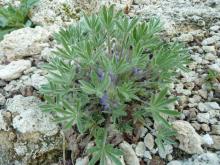
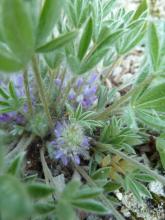
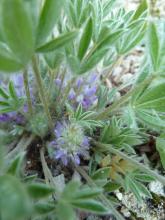

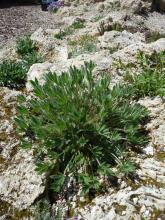

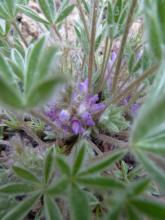

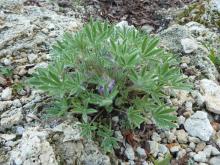
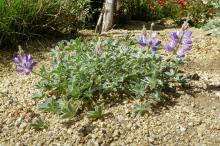
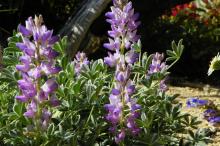
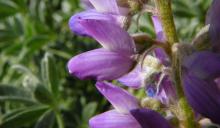
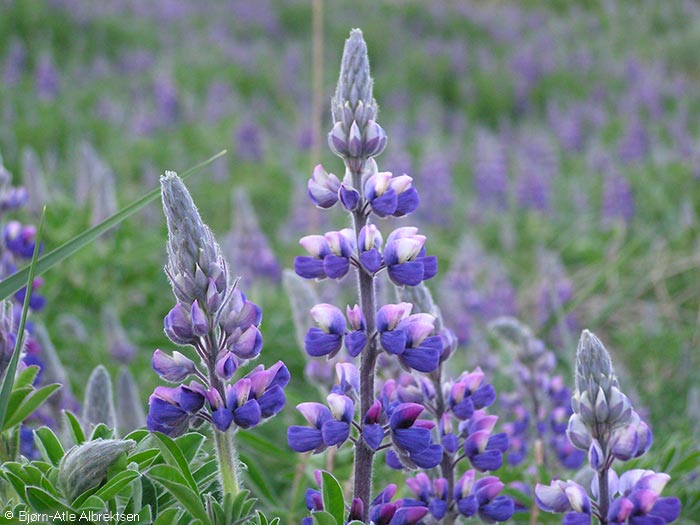
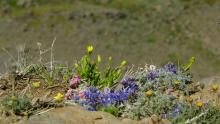
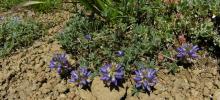
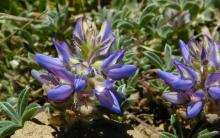
I've tried them from seed 10 times, and although I've actually gotten a few flowers one year, they have only wintered over once. I've grown them in sand, in gravel and sand, and pretty much every other soil medium possible, yet they've simply never really liked it here in the northeast. The person who originally introduced me to rock gardening, Larry Rue, built a huge sand berm about 15 feet long, 3 feet wide and 5 feet tall, and had them self sowing on the south face. Somehow I don't think my wife would be terribly happy if I replicated it here in my garden area, or as she puts it, in the territory she has permitted me to garden. But it IS a beautiful plant, one I'm sure I'll try again to please enough so it will survive 2 years at least.